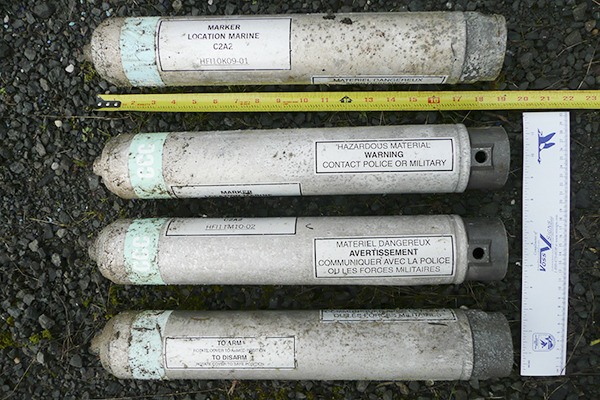Three explosions heard earlier today (Feb. 12) near the Dungeness Wildlife Refuge were the result of U.S. Army technicians disposing of military flares that washed onto the Dungeness Spit, said Dave Falzetti, Wildlife Officer for the U.S. Fish and Wildlife Service.
Falzetti said that though the flares are considered ordnance, they are not explosive.
“They are incendiary devices (smoke flares) used in military exercises and contain phosphorous,” Falzetti said in an e-mail earlier today. “They wash onto area beaches on occasion and pose a hazard to beachcombers.”
Called Marine Location Markers, they are buoyant devices designed to be released from helicopters and fixed-wing aircraft to indicate position in the sea. The device emits a high intensity yellow flame and white smoke for up to 20 minutes.
People in the area of the Dungeness County Park may have heard three small “explosions,” Falzetti, and that a low cloud layer made the noise louder than expected.
The flares, labelled C2A2, have been found on Pacific Northwest beaches. The devices contain “Red Phosphorous,” according to packaging and even after being deployed they can still pose a serious hazard, Falzetti said.
The U.S. Fish and Wildlife Service representatives followed the warning labels and did exactly what everyone who encounters these items should do, Falzetti said, which is to contact the police or military to deal with these hazardous items.
“People should not be picking these up as marine debris,” he said. “Let the experts deal with them safely.”


